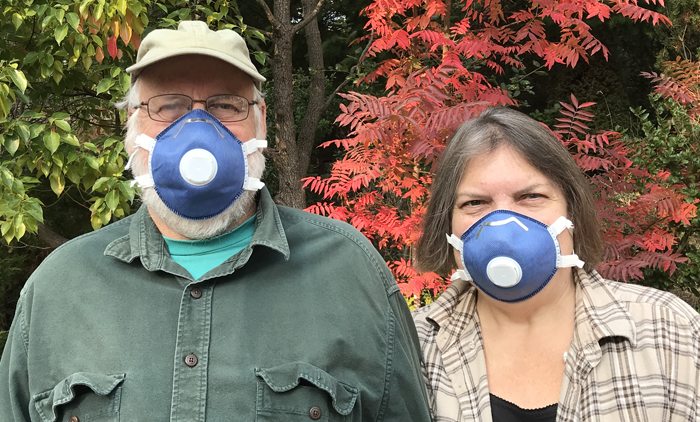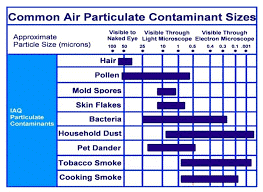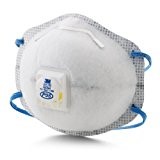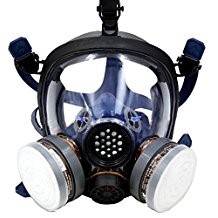
Debra and Larry wearing EnviroKlenz Face Masks
I’ve been living about 10 miles from one of the largest California fires ever for the past nine days now. It has produced a tremendous amount of smoke and ash all over the San Francisco Bay area, but especially right here where I am, near Santa Rosa.
There have been times when we literally could not breathe here without an air filter or face mask. At the end of the first day, Larry and I went to the beach to breathe, but by morning the smoke was there too.
It was very fortunate that I had an air filter in my storage unit. It has made it possible for us to breathe this past week, and I’m still sitting next to it as I write this today.
Smoke conditions in the outside air have been changing day-by-day depending on wind direction. I actually have never been in a situation where the air quality was so bad that I couldn’t breathe but one day last week I walked out the door and started coughing. We drove right to the hardware store to get a face mask. We had tried to buy facemasks a few days before but they were all sold out. That day they did have facemasks, but they were insufficient.
Facemasks are not a new subject for me. Many people with multiple chemical sensitivities (MCS) wear them all the time, as do some people who live in cities with air quality problems.
But since the need for a facemask is now imperative here, I decided to write about facemasks because there is a lot of misinformation in the news and in stores.
We all need to understand the health dangers present in smoky or polluted skies so we can then purchase the proper equipment to protect our lungs and our health
What You Need to Filter When There is Smoke in the Air
Smoke is made up of both particles and gasses. To choose a particle filter, you need to know about these pollutants.
Particles come in various sizes, which are measured in microns (also known as micrometers). Different types of particles have different sizes.
Particle pollution ratings are:

- PM10 : inhalable particles, with diameters that are generally 10 microns and smaller; and
- PM2.5 : fine inhalable particles, with diameters that are generally 2.5 microns and smaller.
Fine particles are the main cause of reduced visibility (haze) in the air. So if visibility is reduced in the air where you are, it’s full of fine particles.
Particles less than 10 microns in diameter pose the greatest health problems, because they can get deep into your lungs, and some may even get into your bloodstream. If the particles are toxic, then you run the risk of spreading toxic particles throughout your body when you breathe them. More on health and environmental effects of particulate matter.
Gasses are much simpler. In order to remove gasses from the air you are breathing you need a filter medium that will remove gasses, such as activated carbon or one of the new technologies that actually break down chemicals into natural elements.
Choosing the Right Face Mask
There are many face masks on the market, but they all fall into three basic types.
Medical Face Masks
 The most common face masks are medical face masks. My local CVS Pharmacy was giving these away for free, but they weren’t doing much good.
The most common face masks are medical face masks. My local CVS Pharmacy was giving these away for free, but they weren’t doing much good.
This is the kind of mask worn by dental and medical personnel to protect themselves from germs that might be carried by patients. It is also used in food service to keep food workers germs off food. Their purpose is to prevent the spread of disease.
They are made from non-woven fabric and filter paper.
If worn properly, a medical facemask will block large-particle droplets, splashes, sprays or splatter that may contain germs (viruses and bacteria), keeping them from reaching your mouth and nose. Facemasks can also help reduce exposure of your saliva and respiratory secretions to others. But medical face masks do not filter or block very small particles in the air that may be transmitted by coughs, sneezes or certain medical procedures. Facemasks also do not provide complete protection from germs and other contaminants because of the loose fit. If you want more protection from germs, use an N95 respirator (see below),
Medical face masks do not protect you from toxic particles or gasses found in smoke.
Face Masks for Particulates
Face masks for particulates will only filter PARTICLES, including dusts and biological micro-organisms. So they are good if you really need protection from germs or are in a situation where there is a lot of dust or smoke.
When you are choosing a particle mask, it needs to reduce exposure to particles down to the size particles you have in your air.
An N95 respirator is designed to block at least 95% of very small (0.3 micron) test particles when properly fitted. These are made from synthetic microfibers, adjustable metal nose clips and cushioning nose foam to provide a custom fit and a secure seal.
The N95 respirator are generally intended for occupational use, but the FDA has cleared certain N95 respirators (N95) for use by the general public. To work as expected, a N95 respirator requires a proper fit to your face. For information on proper fit, refer to the manufacturer’s instructions.
Our local news has been making a big point to only use “N95” particulate masks, however the Centers for Disease Control and Prevention (CDC) does not generally recommend facemasks and respirators for use in home or community settings. They recommend consulting with your health care provider for more information about when to use N95 Respirators at home or in the community.
There are a number of face masks of different types approved by the FDA (labels will say “NIOSH-approved”).
 |
3M Particulate Masks See this page online for a wide selection of 3M N95 respirators. |
NOTE: N95 respirators are not designed for children or people with facial hair. Because a proper fit cannot be achieved on children and people with facial hair, the N95 respirator may not provide full protection.
NOTE: These masks may be made with all sorts of plastics and synthetic materials. Most are not suitable for people with MCS and some outgas air pollutants of their own.
There are quite a number of “N95” face masks on amazon in addition to the 3M models. Some descriptions don’t tell you what materials they are made from, others are decorative and don’t tell you the material used for filtration, some contain “an [unknown] antimicrobial agent that kills germs and lasts for the life of the mask.” Some are just cotton/polyester fabric with an antimicrobial…But none of these are FDA recommended.
If you need a dust mask, stick with a reputable brand that offers a mask that puts effectiveness first over style.
These masks will protect you from particles in smoke, but will NOT protect you from toxic gasses in smoke. They also need to be replaced frequently, depending on the concentration of particles in the air.
Face Masks for Smoke
We’ve been discussing the subject of face masks for smoke on this blog for quite some time, in the context of protection from exposure to cigarette smoke.
You can read the entire discussion at Q&A: Which Face Mask with Filter Cigarette Smoke?
The problem with smoke is that it contains toxic particles and toxic gasses and both need to be removed.
There are two face masks I am aware of that can protect users from smoke from any source and are designed to be safe for people with MCS.
 |
EnviroKlenz Breathing Mask
patented hospital-grade technology made from natural minerals neutralizes chemical gasses and particles |
|
 |
I Can Breathe Honeycomb Pollution Mask
Coconut shell activated carbon filter removes chemical gasses and particles |
Buy Here |
Respirators
 I just want to mention respirators. I’m not going to go into detail about them except to say that they exist. This is a post about face masks.
I just want to mention respirators. I’m not going to go into detail about them except to say that they exist. This is a post about face masks.
But I want you to know that heavy duty respirators do exist. They are especially designed for environments that have a high level of chemical gasses and are designed to hold replaceable cartridges.
Here is a list where you can see and compare some respirators.




I have looked at these before and appreciate your talking about the EnviroKlenz one.
However, a really big problem for me is that it looks like it has a plastic part, as many of these do. I am very sensitive to the out gassing of plastics. So I have been using carbon filter masks until now.
The I Can Breathe Filters are Carbon filters, correct? One can put one inside of the other for more protection, but I am looking in particular for a mask for VOC’s as the apartment neighbor is using a lot of chemicals 24 hours a day, which are coming into this apartment. They appear to be making something like drugs in my opinion. There is no way I can move at this point.
Thanks to my new Zero Toxics Product Registry we can go to look at all the materials used to make this EnviroKlenz mask at Zero Toxics Product Registry: EnviroKlenz Breathing Mask for Pollution . Just click on the big black button that says “Materials Disclosure Statement and scroll down and you will see every material used to make this mask.
Some pieces are polypropylene, which is considered safe, but that doesn’t mean safe for MCS. It’s a petroleum-based plastic.
Your carbon mask will filter gases, but not the particles in smoke.
After reading the information you have posted I feel confused only because there is a statement that EnviroKlenz Breathing Mask is not to be used on people with facial hairs. However; Larry is wearing the mask with facial hairs. So is he safe? or is it not a good idea? I feel uncomfortable about the information because it says one thing but demonstrates another.
Well that is a very good point.
Facial hair would cause the mask to not fit as well and therefore not do as good a job at filtration.
However, this would apply to all masks, not just this one.
Having been living with extremely high air pollution levels I can tell you that ANY amount of filtration is important under conditions where you would want to use a facial mask.
And if it is important to get the best filtration, the man should shave his facial hair.
In this case conditions were not that extreme.
But products often err on the side of caution for legal reasons.